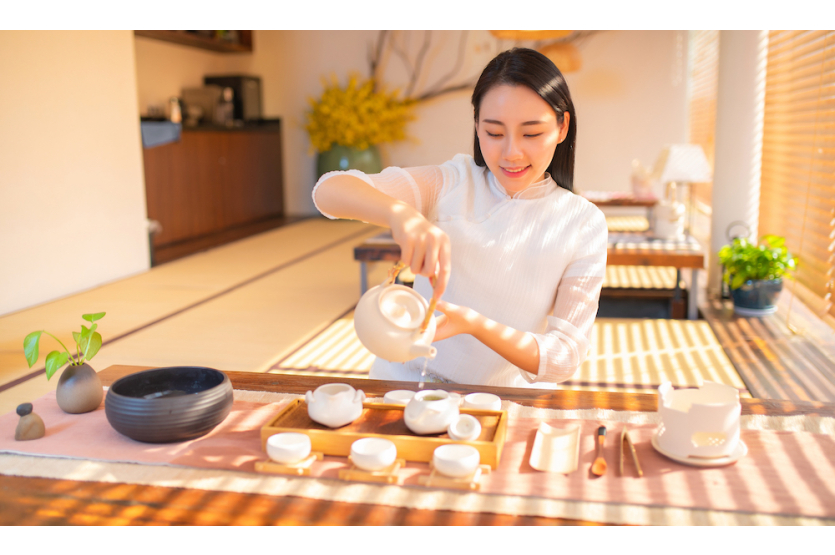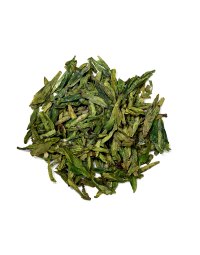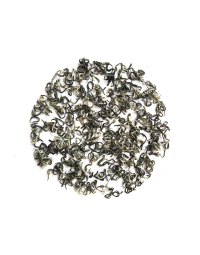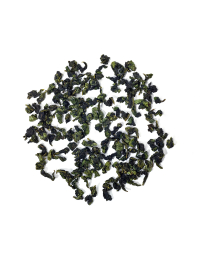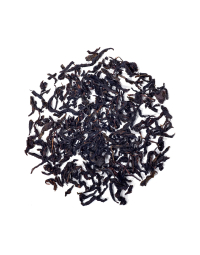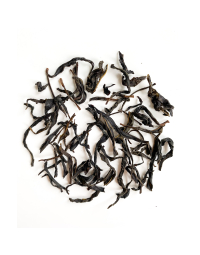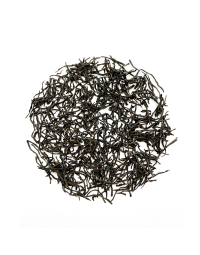With a seemingly endless array of tea varieties to choose from, finding your next Chinese tea can be an adventurous journey. In this guide, we'll provide you with everything you need to know about the various types of Chinese tea and help you unlock the secrets of flavor and aroma.
Ever wonder why each type of tea has a unique taste? In short, this is the result of a collaboration between the tea plant, unique local soil conditions, the weather, and tea production methods. However, the latter ultimately determines the difference between one tea type to another. By understanding the categorisation of tea types, you'll be better able to navigate new flavors and find the perfect brew to suit your taste.
While we mainly focus on Chinese tea types, you'll find that the discussed classification virtually applies to teas from different countries worldwide.
The Camellia Sinensis Tea Plant
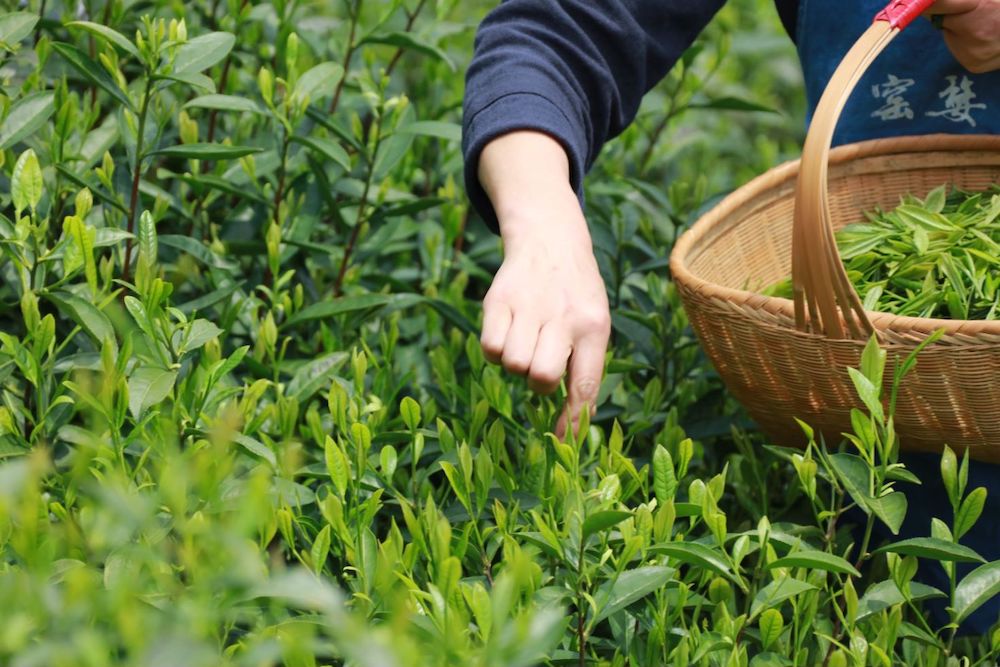
It's common misunderstanding that the types of tea are determined by the use of different tea plants. While different cultivars exists, all teas are produced by processing leaves from the Camellia Sinensis tea plant. In this article, we will focus on the remarkable variety of tea that stems from the Camellia Sinensis plant, while acknowledging the depth of tea culture beyond botanical classification.
So, let's dive into the origins of Camellia Sinensis tea. This evergreen plant is native to Southeast Asia and was first documented in Emperor Shen Nong's medical encyclopedia. The discovery of tea's stimulating effects sparked widespread cultivation, leading to the development of intricate preparation rituals and finishing techniques that go beyond picking and drying.
Over thousands of years, tea has evolved from a humble wild-foraged medicine to one of the most widely consumed beverages worldwide. Join us on a journey through the history and origins of this beloved drink.
Types of Chinese Tea
So now we know that traditional tea comes from the same plant. Despite this common source, we see thousands of different teas consumed across the world. These types of tea are distinct because of the growing region, the specific varietal of tea used, and the finishing techniques applied to the leaves.
At this stage, it's important to understand that the processing method alone defines the type of tea (such as black tea, green tea, and oolong tea). Besides the processing method, varietals and growing regions also influence the flavour and quality.
Chinese Black Tea Types
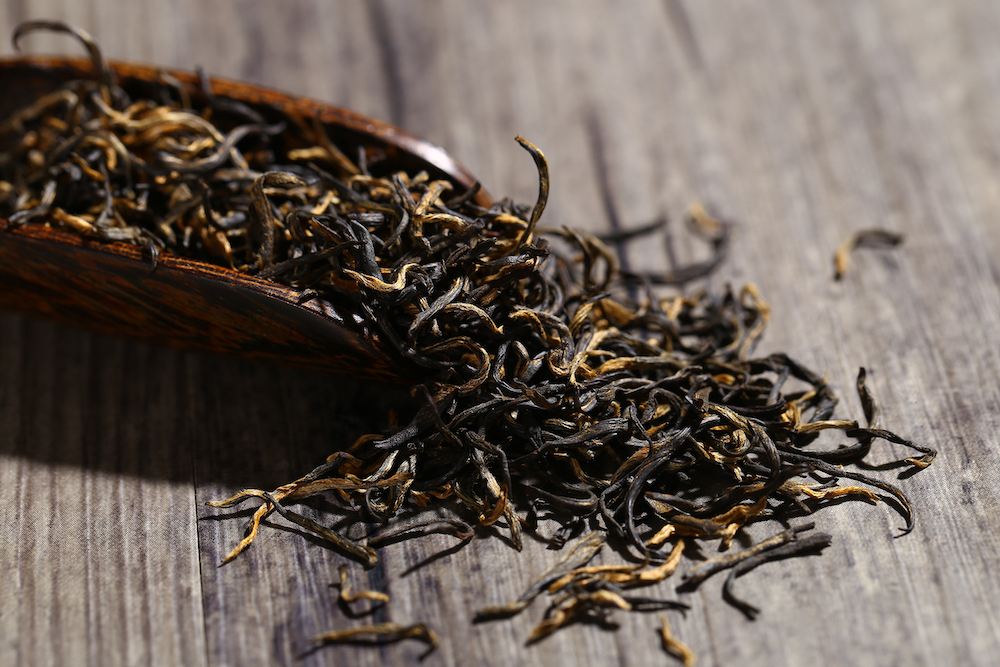
Black tea is without doubt the type of tea most people are familiar with. Chinese black teas tend to taste sweet, fruity, and malty. The unique process of oxidation is responsible for its satisfying taste. Through this process, the leaves are piled up to retain moisture and are exposed to heat or sunlight. As a result, the finished tea reddish-black in color.
Some lower grade black tea leaves are broken down using the CTC method (Cut, Tear, Curl). This allows for a faster extraction of taste. CTC teas are generally lower in quality and are mainly used in tea blends and tea bags.
Originally, black tea became popular in Europe because of its ability to withstand the long journey from China. This led to the British Empire planting its own tea in India for import back to England. In our publication The History of Black Tea, you can learn more about the origin of this tea type.
However, black tea is now thriving back in its birthplace of China, with younger farmers and craftspeople innovating the craft. Exciting new innovations like Jin Jun Mei, less smokey Lapsang Souchong and Yunnan's Dian Hong have come highly popular during the last decade.
Despite the myth that black tea has the most caffeine, the truth is that caffeine levels have much more to do with freshness and picking season. However, black tea is typically brewed stronger with hotter water, which can extract caffeine more quickly than traditional green tea brewing methods. Enjoy the satisfying taste and pick-me-up of black tea.
Chinese Green Tea Types
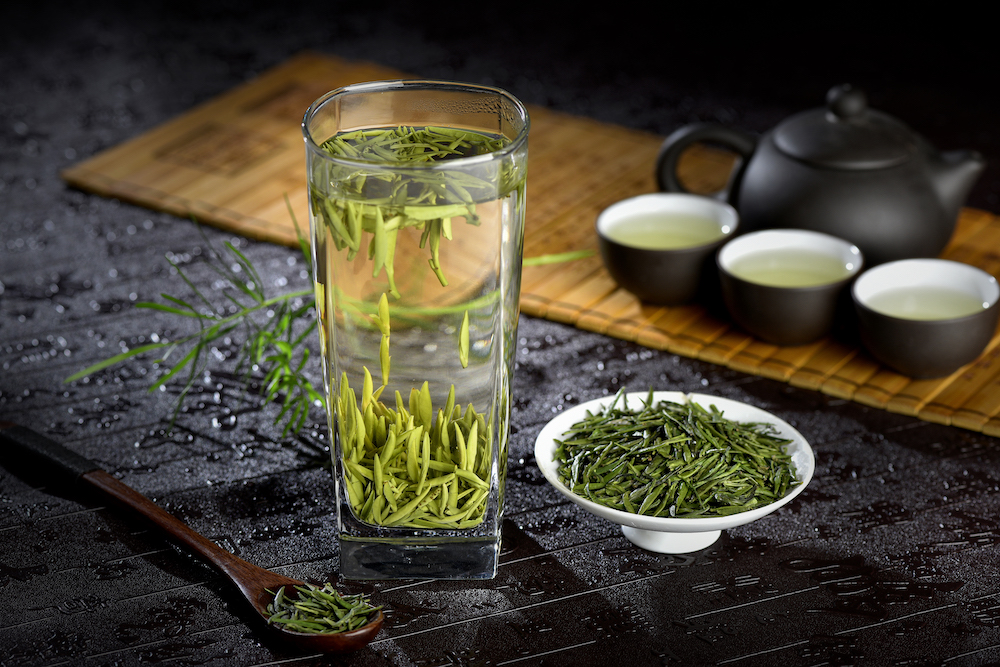
Green tea is made from delicate and sweet tea leaves picked during a short period in early Spring. The leaves are shortly dried in the shade and then pan-fried to make sure the leaves don't oxidise, thus retaining their vivid green color and delightful vegetal flavor. Subsequently, the tea leaves are rolled or pressed into their final form. A well made green teas are fresh, sweet, and have rich and creamy texture, and lasting aftertaste.
Note: Japan, most teas are steamed instead of pan-fried to stop oxidation.
One common misconception about green tea is that it holds less caffeine than other teas. The truth is that green tea picked from buds in early spring is actually higher in caffeine. However, by steeping green tea at a lower temperature for a lighter profile, you can control the amount of caffeine extracted.
Chinese Oolong Tea Types
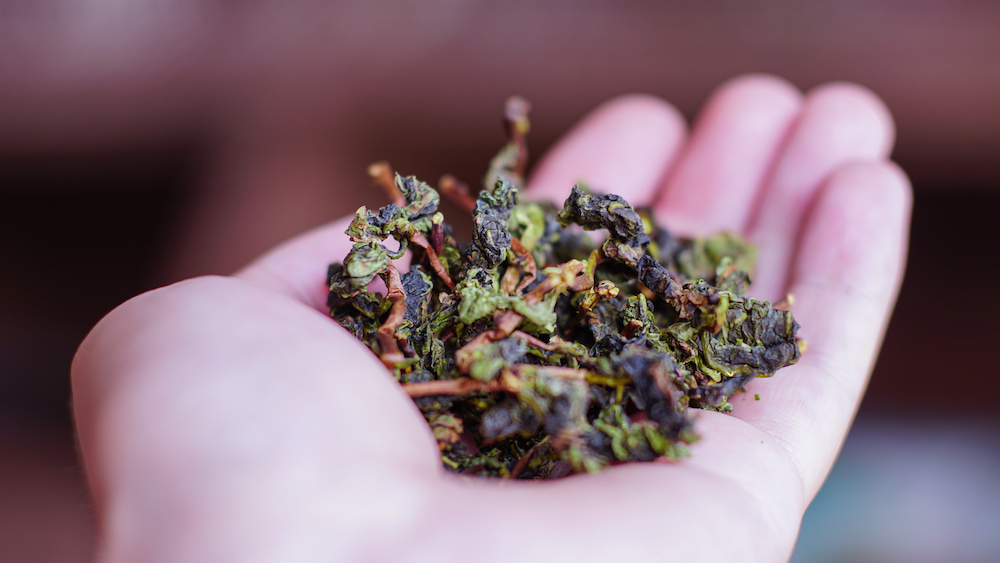
Because oolong teas are partially-fermented they are often considered a type of tea between green and black tea. While this is true, it can be deceiving as oolong can be both lighter and darker than black or green tea depending on how it's roasted. Generally speaking oolong tea are picked, dried, and withered, followed by Yaoqing and roasting. What really sets oolong apart is yaoqing - a step that involves turning and fluffing the leaves to bring out their floral, juicy, fruity, and deeply aromatic flavors. Compared to other tea types, producing oolong tea are the hardest to produce and require many years of experience.
The most popular types of oolong tea include Tie Guan Yin and Da Hong Pao from Fujian province as well as many kinds of Dancong teas from Guangdong.
Due to the difficult production process, good oolong teas are mainly made in China and Taiwan. In China, the Wuyi Mountains, Anxi, and Guangdong province are the main oolong-producing regions. While other countries are also experimenting with oolong tea production, the quality is still far desirable.
Contrary to popular belief, oolong's caffeine levels are not affected by its finishing process. Rather, it's dependent on the temperature and infusion time of the water used, as well as the tea's freshness and unique local growing conditions.
Oolong tea is prized in China, with some farmers dedicating weeks or months to hand-fire the final product for competition tasting. It's no wonder high-end award-winning oolong is some of the most expensive tea in the world, picked from wild cliffside bushes and carefully crafted to perfection.
Pu Erh Tea Types
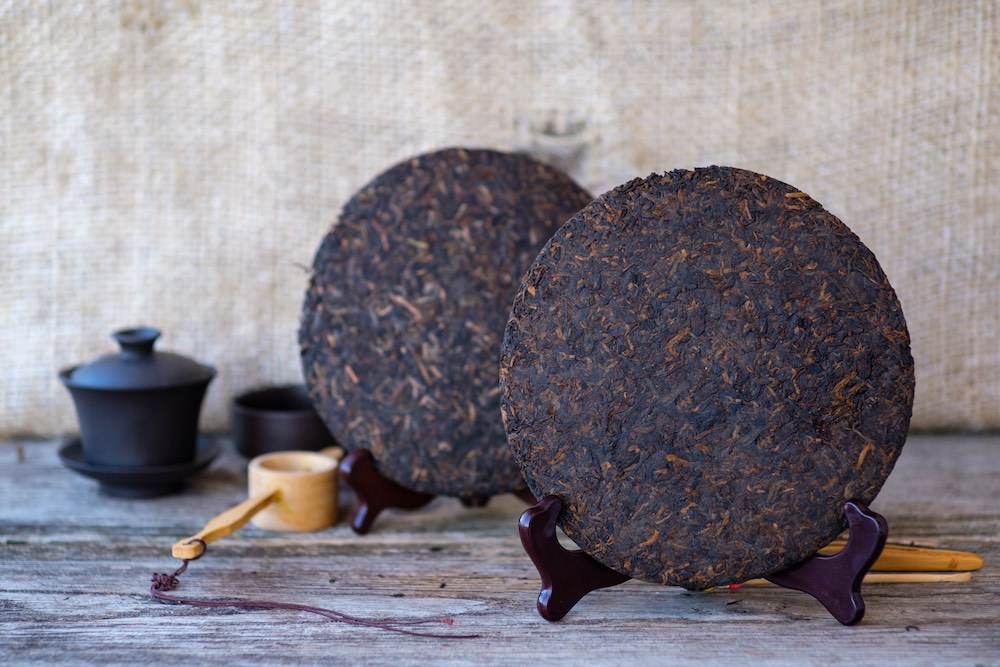
The tea type that offers the most diversity in taste and aroma is pu erh tea. There are two distinct types of pu erh: the ancient Sheng (raw) Pu erh and the more modern Shou (ripe) Pu erh.
Raw pu erh follows the following production steps: picking, withering, pan-frying, rolling, and sun-drying. Afterwards it may be stored in either loose form or pressed into cakes for further natural aging. Raw pu erh offers fresh aroma, with a potential bitterness that is followed by a sweet aftertaste. After long-term aging the taste may mellow out and become smoother, fruitier and sometimes more medicinal.
To produce ripe pu erh the finished raw pu erh tea leaves are 'pile fermented' to speed up the fermentation process. Initially, this method was developed to mimic the taste of aged raw pu erh tea. Instead, due to its bold, thick, earthy and smooth taste, ripe pu erh as become a category of its own.
If you're interested in the nuances in flavour, make sure to read this publication: Pu erh tea taste explained.
Note: While this tea’s aging process can take many years, it begins with a high quality tea that provides the foundation for future complexity and texture. It’s important to note that a good, well processed pu erh tea can also taste fantastic, even when young.
Caffeine levels of Pu erh tea vary based on the bud-to-leaf ratio, water temperature, and brewing time.
Chinese White Tea Types
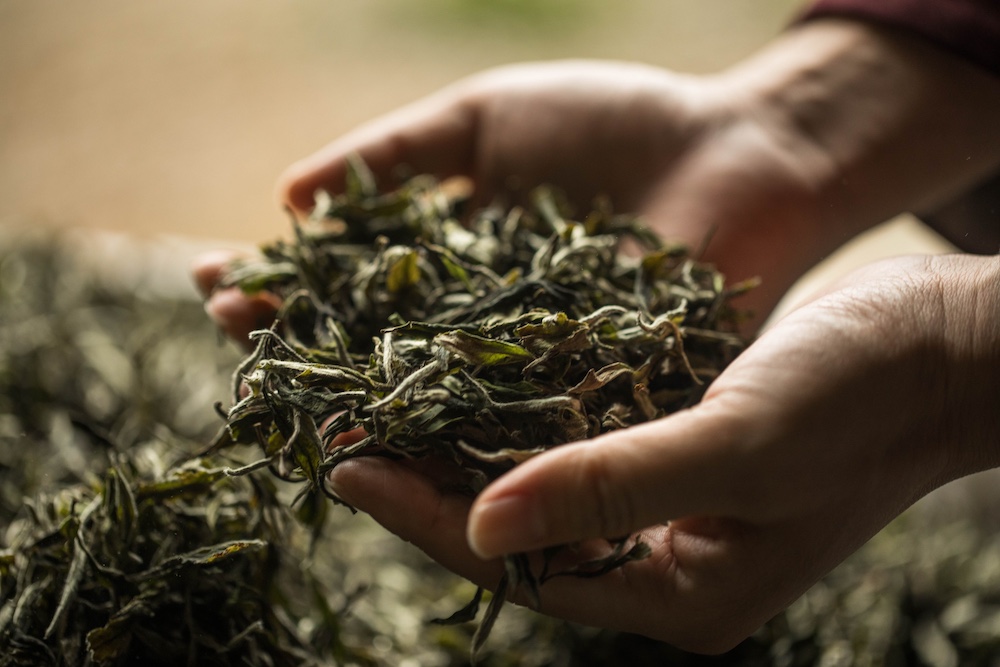
White tea is the least processed type of tea. Unlike other teas, white tea does not involve heat-fixing in its production process. Instead, it relies on a quick sun-drying to preserve its fresh, crisp flavor and unique texture.
Premium white teas such as Silver Needle are typically made from delicate spring buds, which gives them their signature silvery appearance. Lower grades include Bai Mu Dan which often is picked based on the 1 bud 2 leaf standard, followed by the Gong Mei and Shou Mei grades, which contain less buds and more leaves.
While white tea from China is mainly made from the Da Bai cultivar, this tea is defined by its craft rather than its cultivar. Therefore, any type of tea plant can be used to make white tea if it is processed using the quick-drying method without heat fixing.
It's important to make a distinction between fresh and aged white teas. Like raw pu erh tea, white teas are suitable for long-term storage and further aging. As a result, the taste will become stronger and fruitier over time. While the highest silver needle and bai mu dan grade are great for direct consumption or further aging, the lower grades (Shou Mei & Gong Mei) often taste better after long-term aging.
As a product with a rich cultural heritage, white tea reigns supreme in the Fujian province of China, which is its primary production hub. In addition, Yunnan province also produces excellent quality white teas. Due to its fairly simple production method, other countries such Nepal, India, Taiwan, and Sri Lanka also managed to produce decent quality white tea.
Contrary to popular belief, white tea is not necessarily lower in caffeine. Younger tea leaves picked in the early spring tend to be higher in caffeine as this protects the buds from pests. However, if you brew with cooler water or use less tea leaves, you can extract less caffeine, which is often a preferred method for brewing white tea.
Chinese Yellow Tea Types
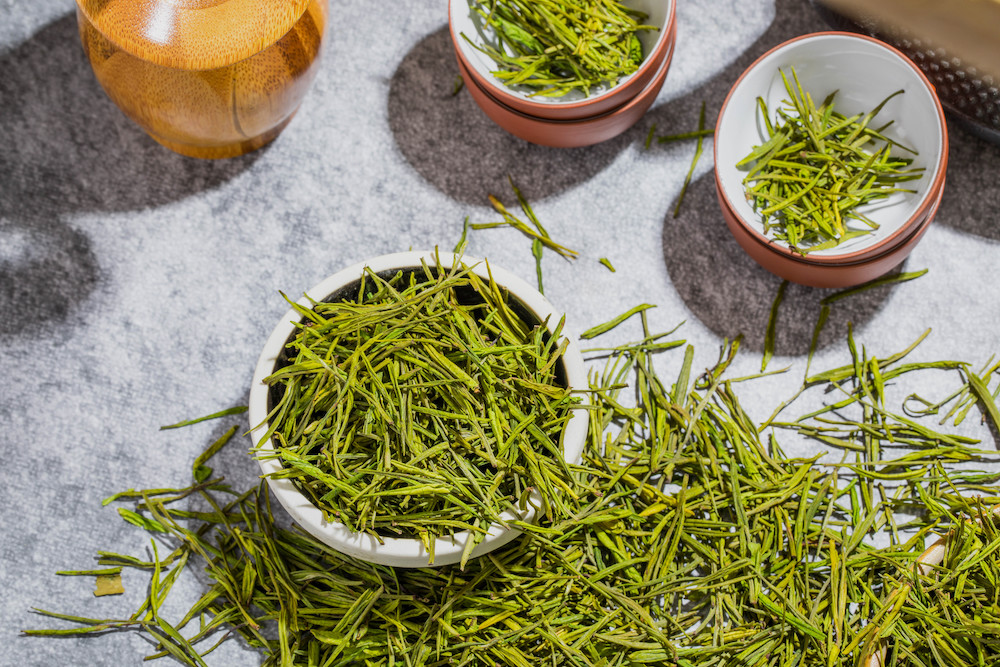
Producing high-quality Yellow tea is a labor of love that requires a special touch. While it follows a similar process as Green tea, there is a unique step called 'Wrapping' or 'Yellowing'. Like green tea, the leaves are picked, dried, and fixed by heating (pan-frying). However, yellow teas are typically pan-fried at lower temperatures and for a shorter time than with green tea.
While still warm and moist, the leaves are wrapped to 'Yellow' them. This allows the leaves to release and reabsorb moisture, a breathing process known as 'reabsorbing essence.' Enclosed in a warm, wet environment, some extra oxidation and fermentation may occur. After a day or two, the leaves are unwrapped, and sometimes the process is repeated before the tea is dried. The final drying usually happens over charcoal at low temperatures.
Yellow tea's partial oxidation from heating and drying positions it between the flavors of White and Green tea. Light, with a warm character, drinking Yellow tea feels like enjoying a light green tea with a silky smooth finish.
Chinese Herbal Tea Types
It's important to understand that the term "herbal tea" encompasses any dried plant steeped in water that isn't picked from the Camellia Sinensis plant. Thus, officially they aren't classified as a tea and not one of the 6 types of Chinese tea. Instead, they are called 'tisanes'. This includes infusions made from flowers (e.g. Chrysanthemum), fruits (e.g. Goji berries), and other herbs like Rooibos and ginger.
Herbal teas are often known as a caffeine-free alternative to traditional tea, though there are some exceptions, such as yerba mate and cocoa.
